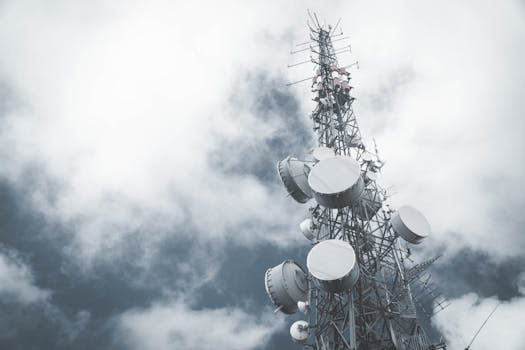Breaking Barriers: How Recent Developments are Transforming Satellite Communication

Satellite communication is undergoing a significant transformation, driven by recent developments in technology and infrastructure. The focus keyword, Satellite Communication, is at the forefront of this change, enabling faster, more reliable, and more accessible communication services. In this article, we will explore the recent developments that are breaking barriers in satellite communication and transforming the industry.
One of the key developments driving this transformation is the launch of new satellite constellations. Companies such as SpaceX, Amazon, and OneWeb are investing heavily in the development of low-Earth orbit (LEO) satellite constellations, which promise to provide faster and more reliable communication services. These constellations are designed to provide global coverage, with thousands of satellites working together to provide seamless communication services. The use of LEO satellites reduces latency and increases bandwidth, making it possible to support a wide range of applications, from broadband internet to IoT devices.
Another significant development in satellite communication is the advancement of antenna technology. Phased array antennas are becoming increasingly popular, as they offer greater flexibility and higher gain than traditional parabolic antennas. These antennas use a large number of small antennas, which can be electronically steered to track satellites in real-time. This allows for more efficient use of bandwidth and increased reliability, making it possible to support mission-critical applications. The development of flat panel antennas is also gaining traction, as they offer a compact and lightweight solution for satellite communication.
The use of satellite communication is also being driven by the growing demand for connectivity in remote and underserved areas. Many communities around the world lack access to reliable communication services, making it difficult to access essential services such as healthcare, education, and emergency services. Satellite communication is helping to bridge this gap, by providing a means of communication that is not dependent on traditional infrastructure. This is particularly important in areas where it is difficult or impossible to deploy traditional communication infrastructure, such as in remote or disaster-stricken areas.
In addition to these developments, there are also significant advancements being made in the field of satellite communication technology. The use of advanced modulation techniques, such as quadrature amplitude modulation (QAM), is becoming more widespread. These techniques allow for more efficient use of bandwidth, making it possible to support higher data rates and more users. The development of new satellite communication protocols, such as the Satellite Communication Protocol (SCP), is also helping to improve the efficiency and reliability of satellite communication services.
Finally, the use of satellite communication is also being driven by the growing demand for IoT services. The number of IoT devices is expected to grow significantly in the coming years, and satellite communication is playing a key role in supporting this growth. Satellite communication provides a means of connectivity that is not dependent on traditional infrastructure, making it possible to support IoT devices in remote and underserved areas. This is particularly important for applications such as smart agriculture, where satellite communication can be used to monitor and control IoT devices in real-time.
In conclusion, recent developments in Satellite Communication are breaking barriers and transforming the industry. With advancements in technology and investments in infrastructure, satellite communication is becoming more accessible and efficient. The use of new satellite constellations, advanced antenna technology, and improved communication protocols is helping to support a wide range of applications, from broadband internet to IoT devices. As the demand for connectivity continues to grow, satellite communication is playing an increasingly important role in supporting this growth, and is helping to bridge the gap in remote and underserved areas.
The future of Satellite Communication looks bright, with many exciting developments on the horizon. The launch of new satellite constellations, the advancement of antenna technology, and the development of new communication protocols are all helping to drive growth and innovation in the industry. As the use of satellite communication continues to expand, it is likely that we will see new and exciting applications emerge, from smart cities to autonomous vehicles. One thing is certain, however, and that is that Satellite Communication will play a critical role in shaping the future of communication, and will help to connect people and devices around the world like never before.




